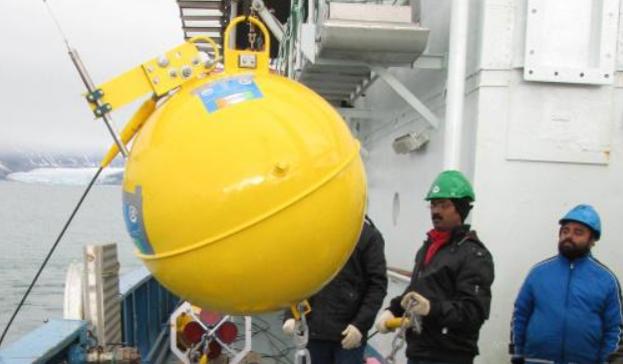Biodiversity Management Committees
Topic in news because EPW ran a story about it on 19th April 2014.
Q. Discuss the structure and functions of Biodiversity Management Committees under Biodiversity Act 2002? Evaluate their success in India. (200 words)
- Biological Diversity Act 2002 mandates all local bodies to setup Biodiversity Management Committees (BMC).
- Structure: One Chairperson, Six Members: 1/3rd of nominated should be women, SC/ST reservation as per state demography.
Functions:
- Preserve and promote local biodiversity- breeds of birds, animals and plants.
- Prepare People’s Biodiversity Register (PBR)- an Electronic database with inputs from locals.
- Maintain data medicinal plants/resources used by local Vaidhya (traditional healer).
- Advice State & National Biodiversity Boards on matters related to local biodiversity.
- Under Nagoya Protocol of Convention on Biodiversity (CBD), they can collect fees for granting access to Biodiversity register to researchers and commercial companies.
Why limited success:
- The legal/IPR status of PBR register is in grey area, leading to frivolous litigations.
- For example, In Madhya Pradesh, Chindwara BMC filed a case against Coal India, demanding profit sharing on the premise that coal is a biological resource.
- In some states, Panchayati Raj Institutions (PRI) have refused to form BMCs fearing erosion of their authority over minor forest produce.
- State Forest departments, Forest traders & mining lobby don’t cooperate with BMC for the similar reason.
- UNDP and UNEP have allotted separate funding for BMCs but money not utilized given the administrative red-tapes in India.
Given these limited finance, decision making powers and non-cooperation from others, the BMCs are reduced to mere data gathering bodies; and have failed to catalyze Sustainable development in Rural India. (Except a few Cinderella stories and “glorified case studies” Yojana and Kurukshetra)
~230 words
Ministry of Earth Science: 100 days
Earth science ministry has initiated following reforms in the first 100 days of Prime minister Modi.
- Issued agro-meterological advisory to millions of farmers
- Setup 1.1 petaflop High Performance Computing system for weather and climate forecasts.
- Completed the City Weather Forecast projects in 300+cities
| Place | What |
|---|---|
| Vaishnodevi | heliport Aviation Weather Operating System (AWOS) |
| Hyderabad | International Training Centre in Operational Oceanography |
| Kerala | Coastal Zone Management Plans (CZMP) |
| TN and Andhra Pradesh | Shoreline changes maps prepared |
| Norway | IndARC: First Arctic Mooring system off the Norway coast (as we discussed in previous topic.) |
| USA | first Indo-US joint oceanographic expedition in the Bay of Bengal for research on Monsoon |
IndARC

IndARC to monitor Arctic climate cycles, its impact on Monsoon
- India’s first underwater moored observatory
- set up in the Kongsfjorden fjord, in Norway near the North Pole
- This place is ~1000 kms away from North Pole, its considered a natural laboratory for studying the Arctic climate variability, because it gets climatic signals from both Arctic and Atlantic Oceans.
Benefits:
- Realtime data collection on Ocean currents, salinity, temperature etc.
- To understand the Arctic climate process .
- Because Arctic glacier melting will trigger changes in weather patterns and ocean currents.
- Thus, it can affect Indian monsoon system as well.
- Designed by:
- Earth System Science Organisation (ESSO)
- National Centre for Antarctic and Ocean Research (NCAOR)

![[Environment] Mangrove Species Conocarpus banned in Gujarat & Telangana](https://mrunal.org/wp-content/uploads/2023/09/edp-conocarpus-500x383.png)
![[Environment] Floating Solar Farms, Banni Grassland, Nairobi flies & more Weekly Mrunal Digest from Jul week1-2022 (WMD)](https://mrunal.org/wp-content/uploads/2022/07/Floating-Solar-Farm-500x383.webp)
![[Environment WMD] Single use plastic ban, ESZ, Surya Nutan Cooker, & more from Jun week3-2022](https://mrunal.org/wp-content/uploads/2022/07/single-use-plastic-main-500x383.jpg)
![[T25] UPSC Mock Round#43: Environment & Geography Practice Questions- Global Climate Risk Index 2020, Bog wetland and More](https://mrunal.org/wp-content/uploads/2018/12/c-t25-taimur-500x383.jpg)
Mrunal why you posting outdated articles from 2015 point if view..?? Should i done with the background of article only or go for recieve factual content in it ??
No question has been asked from it in 2014 , is there is scope of an issue to be asked in exam which is 1 +half year old….??
Dear sir, I request u to put study materials in Hindi medium too…we all Hindi medium aspirants of ias exm will be very greatful to you..
Regards. Prashant ranjan